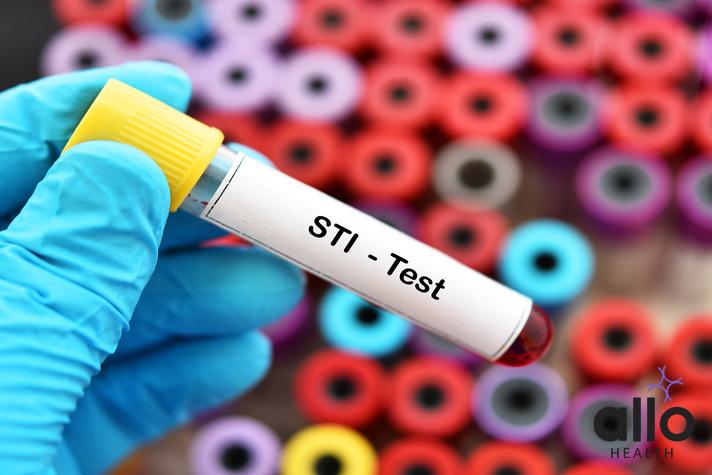What Are The Causes Of Trichomoniasis?

Allo Health is dedicated to personalized well-being, offering support and trusted information tailored to individual health goals. The platform emphasizes human-generated content, led by a distinguished medical team of experts, including physicians and sexual health specialists. Their commitment to credibility involves rigorous fact-checking, authoritative research, and continuous updates to ensure accurate, up-to-date information. Allo Health's unique approach goes beyond conventional platforms, providing expert-led insights and a continuous commitment to excellence, with user feedback playing a crucial role in shaping the platform's authoritative voice.

Dr Sanina Mansoor holds MBBS degree from Yenepoya university,Mangalore.She has 8 years of experience working as a medical officer at various health centres and medical colleges.
Why This Was Upated?
Our experts continually monitor the health and wellness space, and we update our articles when new information became available.
Updated on 26 February, 2025
- Article was updated as part of our commitment to diversity, equity, and inclusion.
"The following blog article provides general information and insights on various topics. However, it is important to note that the information presented is not intended as professional advice in any specific field or area. The content of this blog is for general educational and informational purposes only.
Book consultation
The content should not be interpreted as endorsement, recommendation, or guarantee of any product, service, or information mentioned. Readers are solely responsible for the decisions and actions they take based on the information provided in this blog. It is essential to exercise individual judgment, critical thinking, and personal responsibility when applying or implementing any information or suggestions discussed in the blog."
Trichomoniasis is a sexually transmitted infection (STI) caused by the parasite Trichomonas vaginalis. It’s one of the most common curable STIs worldwide, affecting both men and women. Despite its prevalence, many individuals are unaware of its causes, symptoms, and treatment options. This article aims to provide a comprehensive understanding of trichomoniasis, focusing primarily on its causes.
Understanding Trichomoniasis Trichomoniasis is primarily transmitted through sexual intercourse, including vaginal, anal, or oral sex. However, it can also spread through non-sexual means, such as sharing contaminated objects like towels or swimsuits. The parasite responsible for trichomoniasis, Trichomonas vaginalis, thrives in warm, moist environments, making genital areas an ideal breeding ground.
Causes of Trichomoniasis
- Trichomonas vaginalis Infection: The primary cause of trichomoniasis is the infection with Trichomonas vaginalis, a single-celled protozoan parasite. This parasite targets the genitourinary tract, including the urethra in men and the vagina and urethra in women. Upon transmission, the parasite attaches itself to the mucous membranes and begins to proliferate, leading to infection.
- Sexual Contact: Trichomoniasis is primarily a sexually transmitted infection. The parasite is transmitted from one person to another through sexual contact, including vaginal, anal, or oral sex. Individuals engaging in unprotected sexual activities with multiple partners or those with a history of STIs are at a higher risk of contracting trichomoniasis.
- Asymptomatic Carriers: One of the significant challenges in controlling trichomoniasis is the presence of asymptomatic carriers. While some individuals develop noticeable symptoms, others may carry the infection without showing any signs. Asymptomatic carriers can unknowingly transmit the parasite to their sexual partners, contributing to the spread of the infection.
- Non-Sexual Transmission: Although less common, trichomoniasis can also spread through non-sexual means. Sharing contaminated objects like towels, undergarments, or bathing suits with an infected individual can facilitate the transmission of Trichomonas vaginalis. However, sexual contact remains the primary mode of transmission.
- Immune System Factors: Individuals with weakened immune systems are more susceptible to trichomoniasis. Conditions such as HIV/AIDS, certain cancers, or undergoing immunosuppressive therapy can compromise the body’s ability to fight off infections, making them more vulnerable to trichomoniasis and other STIs.

Symptoms of Trichomoniasis
Trichomoniasis can manifest with a wide range of symptoms, although some individuals may remain asymptomatic. When symptoms do occur, they typically appear within 5 to 28 days after exposure to the parasite. Common symptoms of trichomoniasis include:
- Genital Discharge: Both men and women may experience abnormal genital discharge, which can vary in color (typically green, yellow, or white) and consistency (foamy or frothy). The discharge may have a foul odor and may increase in volume over time.
- Genital Itching or Irritation: Itching or irritation in the genital area is another common symptom of trichomoniasis. This discomfort may be mild to severe and can interfere with daily activities and sexual intercourse.
- Pain or Discomfort During Urination: Trichomoniasis can cause pain or discomfort during urination, often described as a burning sensation. This symptom may be more pronounced in women, particularly during menstruation.
- Pain During Sexual Intercourse: Both men and women may experience pain or discomfort during sexual intercourse (dyspareunia) due to inflammation and irritation of the genital tissues.
- Lower Abdominal Pain: In some cases, trichomoniasis may cause lower abdominal pain or discomfort, similar to menstrual cramps. This symptom is more common in women but can also occur in men.
- Swelling of the Genital Area: Severe cases of trichomoniasis may lead to swelling or inflammation of the genital area, including the vulva, vagina, penis, or urethra.
It’s important to note that not everyone with trichomoniasis will experience symptoms. Asymptomatic individuals can still transmit the infection to their sexual partners, highlighting the importance of regular STI screening and testing.
Diagnosis and Treatment
Diagnosing trichomoniasis typically involves a combination of clinical evaluation, laboratory tests, and microscopic examination of genital samples. Healthcare providers may collect samples of genital discharge or urine for laboratory testing to detect the presence of Trichomonas vaginalis.
Fortunately, trichomoniasis is easily treatable with prescription medications, usually antibiotics such as metronidazole or tinidazole. These medications work by killing the parasite and clearing the infection from the body. It’s essential to complete the full course of antibiotics as prescribed, even if symptoms improve before finishing the medication.
In addition to treating the infected individual, healthcare providers may recommend that their sexual partners also undergo testing and treatment to prevent reinfection and further transmission of the parasite. Abstaining from sexual activity until both partners have completed treatment can help prevent the spread of trichomoniasis.
Preventing Trichomoniasis
While trichomoniasis is highly prevalent, there are steps individuals can take to reduce their risk of infection:
- Practice Safe Sex: Using condoms correctly and consistently during sexual intercourse can significantly reduce the risk of contracting trichomoniasis and other STIs.
- Limit Sexual Partners: Reducing the number of sexual partners and choosing partners who have been tested for STIs can lower the risk of trichomoniasis transmission.
- Get Tested Regularly: Routine STI screening is essential for early detection and treatment of trichomoniasis and other sexually transmitted infections, particularly for individuals with multiple sexual partners or a history of STIs.
- Avoid Sharing Personal Items: Avoid sharing personal items such as towels, undergarments, or bathing suits, as these items can potentially harbor and transmit Trichomonas vaginalis.
- Communicate with Partners: Open and honest communication with sexual partners about STIs, testing, and prevention strategies is crucial for maintaining sexual health and preventing the spread of infections.

Trichomoniasis is a common sexually transmitted infection caused by the parasite Trichomonas vaginalis. It spreads primarily through sexual contact but can also transmit through non-sexual means. While some individuals may remain asymptomatic, others may experience symptoms such as genital discharge, itching, or discomfort. Early diagnosis and treatment are essential for managing trichomoniasis and preventing further transmission. Practising safe sex, getting tested regularly, and communicating with sexual partners are key strategies for reducing the risk of trichomoniasis and other STIs.








































